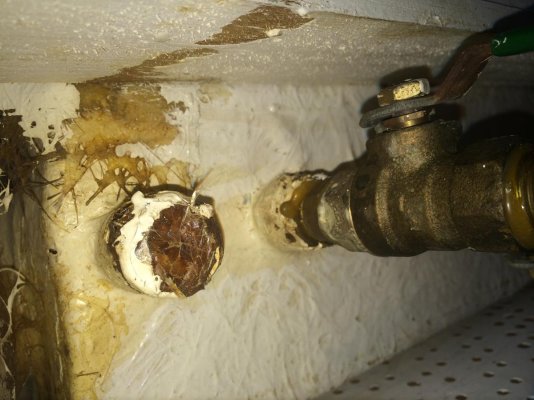Not wanting to cause an argument, but I disagree.
Proper filters remove water. That's not difficult to achieve yourself, you really don't need to engage the expensive services of a professional who makes it sound complicated.
And I disagree and there is far more to polishing than just removing water. Removing water is easy. Removing sludge not that hard. Restoring quality to the fuel more difficult, leaving the tanks clean and the fuel clean and with all the characteristics of new far more difficult.
You're right, if all one is doing is removing water, then the charges for polishing are very high, but in most cases when professionals are called, more than water removal is needed.
You are also correct in pointing out the value of coalescers in addition to centrifuges.
Polishing is the careful removal of non-combustible contaminates below levels stated in ASTM D975 (Standard Specification for Diesel Fuel Oils) while re-suspending (keeping) combustible contaminates to maintain ASTM standards for BTU value, lubricity, and cetane. The main difference between polishing and filtering is that fuel polishing acknowledges that fuel itself can degrade/consolidate (clump together into solids) and that it needs to be kept, where as fuel filtering does not. Fuel polishing recognizes that combustible contaminates should be changed back to their original form and re-suspended in the fuel so the fuel stays within industry specifications and functions as it’s intended to. Fuel filtering ignores that and simply pulls all contaminates out without regard for their value to the fuel and the engine.
Now the other task typically being paid for that pushes the price up in the cleaning of the tank. You have fuel problems, clean the fuel, put it back in a dirty tank and you haven't completed the task. True professionals are going to clean your tank or tanks.
If someone just got a little water in their last fuel purchase, then complete polishing isn't required. It can all be filtered. However, if someone has a recurring problem, and most often if they're dealing with fuel and a tank that have set for years unused or someone has issues with other contaminants then more is often required. Professional polishing and tank cleaning is expensive but justifies itself if really needed. If that's not needed then there are cheaper solutions.
We have an Alfa Laval system on the boat we're on at the moment, because we do cruise often outside the US and fuel in many different areas plus we make longer ocean runs. We don't have a polishing system, just a good filtration system, on boats that never leave the US and never venture far offshore.


